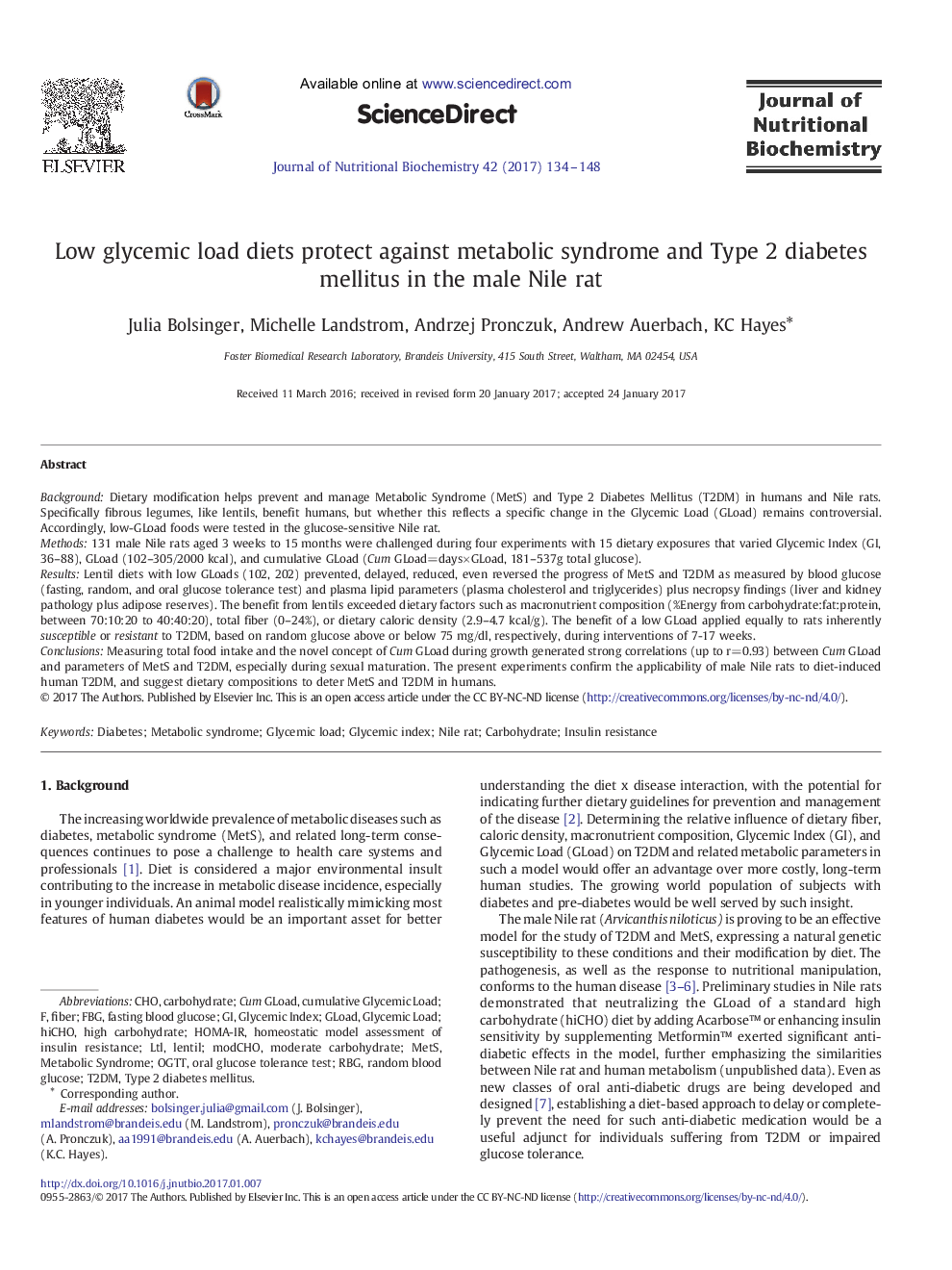| Article ID | Journal | Published Year | Pages | File Type |
|---|---|---|---|---|
| 5512900 | The Journal of Nutritional Biochemistry | 2017 | 15 Pages |
BackgroundDietary modification helps prevent and manage Metabolic Syndrome (MetS) and Type 2 Diabetes Mellitus (T2DM) in humans and Nile rats. Specifically fibrous legumes, like lentils, benefit humans, but whether this reflects a specific change in the Glycemic Load (GLoad) remains controversial. Accordingly, low-GLoad foods were tested in the glucose-sensitive Nile rat.Methods131 male Nile rats aged 3 weeks to 15 months were challenged during four experiments with 15 dietary exposures that varied Glycemic Index (GI, 36-88), GLoad (102-305/2000 kcal), and cumulative GLoad (Cum GLoad=daysÃGLoad, 181-537g total glucose).ResultsLentil diets with low GLoads (102, 202) prevented, delayed, reduced, even reversed the progress of MetS and T2DM as measured by blood glucose (fasting, random, and oral glucose tolerance test) and plasma lipid parameters (plasma cholesterol and triglycerides) plus necropsy findings (liver and kidney pathology plus adipose reserves). The benefit from lentils exceeded dietary factors such as macronutrient composition (%Energy from carbohydrate:fat:protein, between 70:10:20 to 40:40:20), total fiber (0-24%), or dietary caloric density (2.9-4.7 kcal/g). The benefit of a low GLoad applied equally to rats inherently susceptible or resistant to T2DM, based on random glucose above or below 75 mg/dl, respectively, during interventions of 7-17 weeks.ConclusionsMeasuring total food intake and the novel concept of Cum GLoad during growth generated strong correlations (up to r=0.93) between Cum GLoad and parameters of MetS and T2DM, especially during sexual maturation. The present experiments confirm the applicability of male Nile rats to diet-induced human T2DM, and suggest dietary compositions to deter MetS and T2DM in humans.
Graphical AbstractDownload high-res image (190KB)Download full-size image
